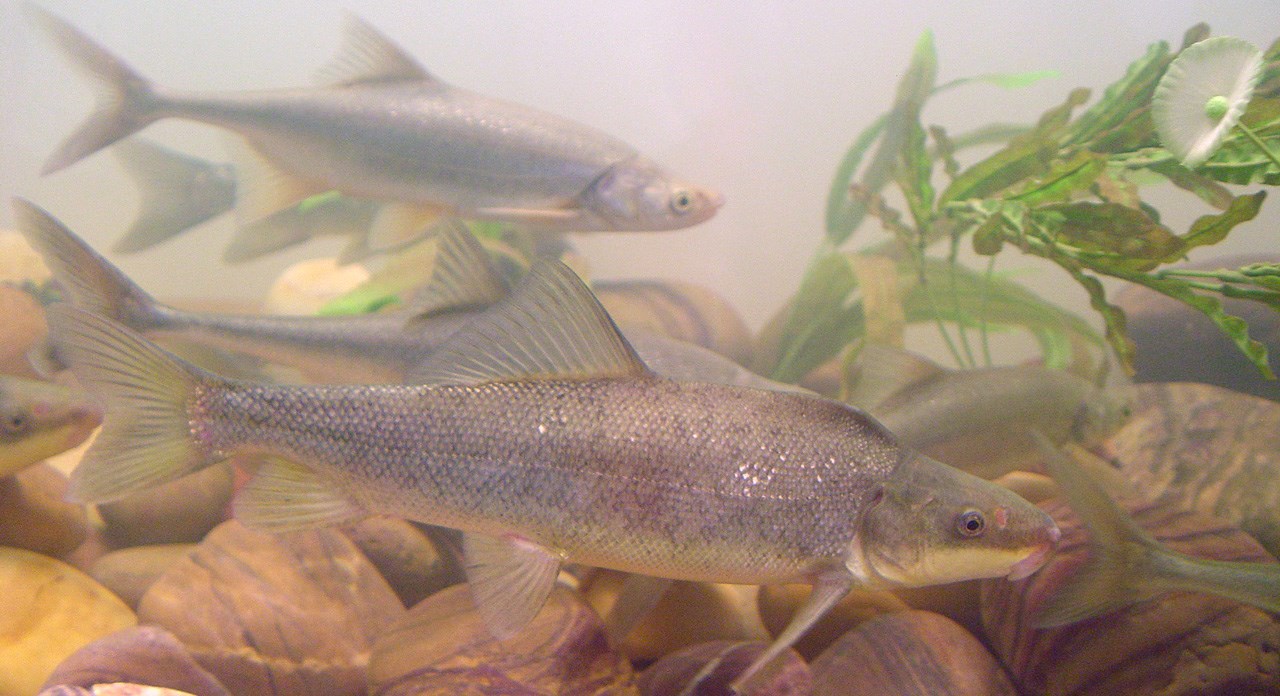
NPS The Colorado River and its tributaries make up one of the world’s most colorful river basins. From the high mountains of Wyoming and Colorado, the river drops more than two miles in elevation on its 1,700- mile journey to the Gulf of California. For long stretches, the river is bounded by red canyon walls. Historically, river flows fluctuated widely from season to season and from year to year, reaching peaks of nearly 400,000 cubic feet per second. It took tough, adaptable creatures to survive in this river system. The Colorado River BasinThe Colorado River basin is composed of the Colorado River and its tributaries. The San Juan, Escalante, Dirty Devil and Paria Rivers all enter the Colorado River within Glen Canyon NRA. They are home to 14 native fish species, four of which are now endangered or threatened. The endangered Colorado pikeminnow, razorback sucker, and bonytail, along with the threatened humpback chub, evolved in the Colorado River basin and exist nowhere else on earth. Change in HabitatThere are two main contributors to the decline of these four native fish species: water development and the introduction of nonnative fish. Dams, diversions, and other barriers, which provide recreation, flood control, critical water storage, and power generation for the rapidly growing Southwest, also change the dynamics and environment of the river. In many areas, the river is no longer the warm, silt-laden, and sometimes turbulent home these species require. In addition, as the demands of tourism and sport fishing have increased, more than 40 species of nonnative fish, many of which are predatory, have been introduced into the Colorado Basin. 
Arizona Game & Fish Department Native FishColorado pikeminnow (Ptychocheilus lucius)
Razorback sucker (Xyrauchen texanus)
Bonytail (Gila elegans)
Humpback chub (Gila cypha)
Fish recovery in Glen Canyon National Recreation AreaThroughout the Colorado River Basin, partnerships of local, state, and federal groups are working to conserve and recover endangered and threatened fishes. Steps underway to re-establish these fish species
Although they are rare, due to monumental efforts upriver by a host of agencies and interest groups, Colorado pikeminnow, razorback sucker, bonytail, and humpback chub can occasionally be caught in the upper reaches of Lake Powell near the inflows of the Colorado and San Juan Rivers. Please carefully handle and quickly return these fish to the water if you chance to catch one. For more information about the Upper Colorado Endangered Fish Recovery Program, visit their website at www.ColoradoRiverRecovery.org |
Last updated: March 14, 2023
